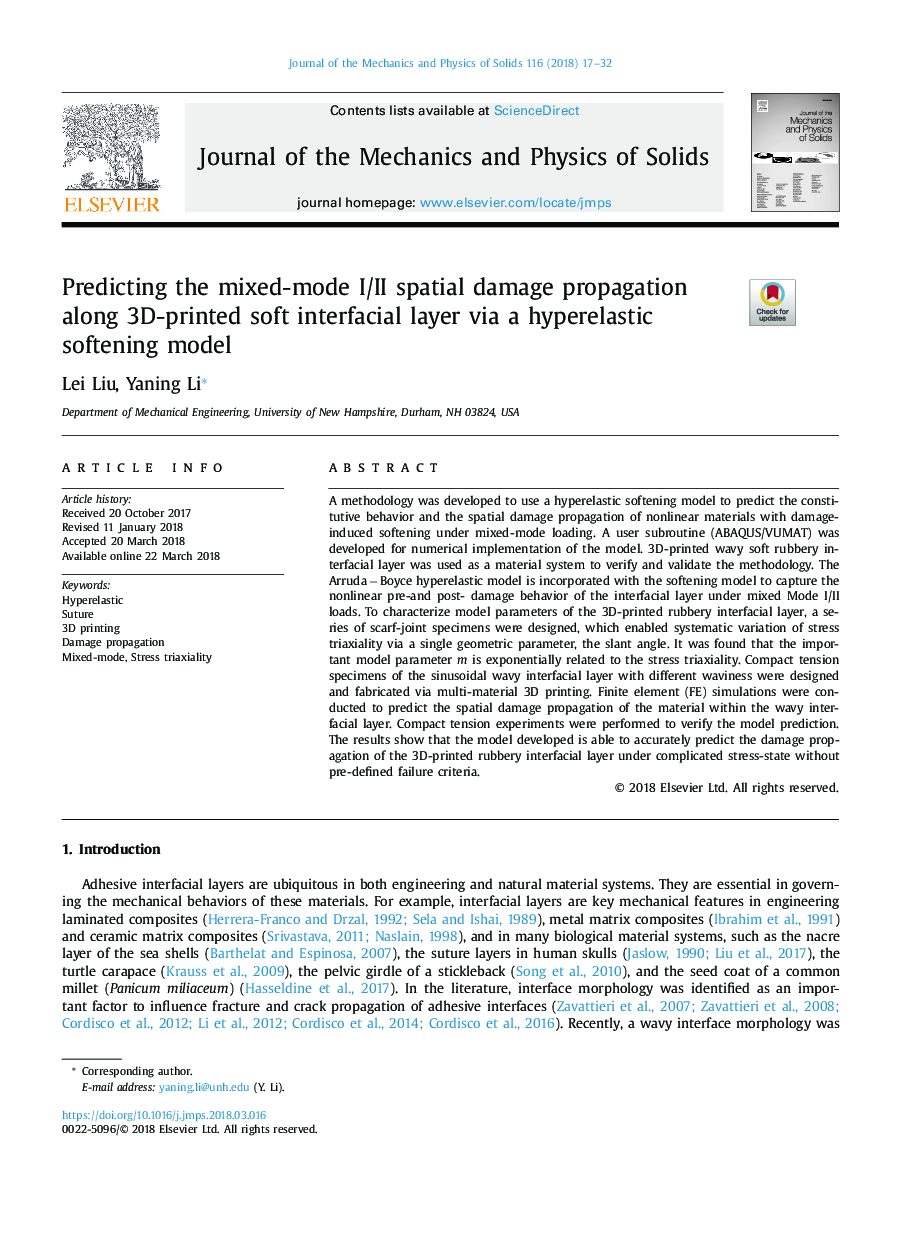| Article ID | Journal | Published Year | Pages | File Type |
|---|---|---|---|---|
| 7177410 | Journal of the Mechanics and Physics of Solids | 2018 | 16 Pages |
Abstract
A methodology was developed to use a hyperelastic softening model to predict the constitutive behavior and the spatial damage propagation of nonlinear materials with damage-induced softening under mixed-mode loading. A user subroutine (ABAQUS/VUMAT) was developed for numerical implementation of the model. 3D-printed wavy soft rubbery interfacial layer was used as a material system to verify and validate the methodology. The Arrudaâ¯ââ¯Boyce hyperelastic model is incorporated with the softening model to capture the nonlinear pre-and post- damage behavior of the interfacial layer under mixed Mode I/II loads. To characterize model parameters of the 3D-printed rubbery interfacial layer, a series of scarf-joint specimens were designed, which enabled systematic variation of stress triaxiality via a single geometric parameter, the slant angle. It was found that the important model parameter m is exponentially related to the stress triaxiality. Compact tension specimens of the sinusoidal wavy interfacial layer with different waviness were designed and fabricated via multi-material 3D printing. Finite element (FE) simulations were conducted to predict the spatial damage propagation of the material within the wavy interfacial layer. Compact tension experiments were performed to verify the model prediction. The results show that the model developed is able to accurately predict the damage propagation of the 3D-printed rubbery interfacial layer under complicated stress-state without pre-defined failure criteria.
Related Topics
Physical Sciences and Engineering
Engineering
Mechanical Engineering
Authors
Liu Lei, Li Yaning,
